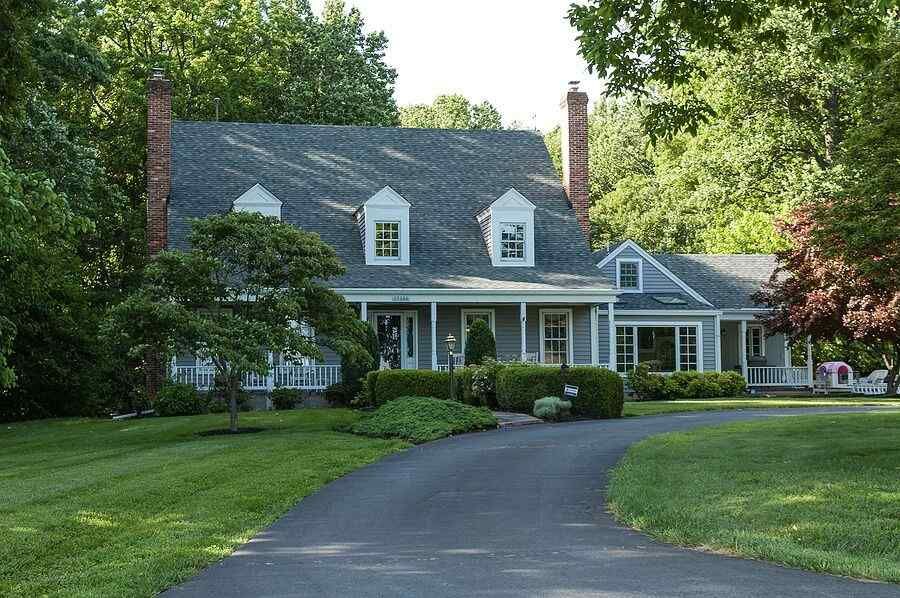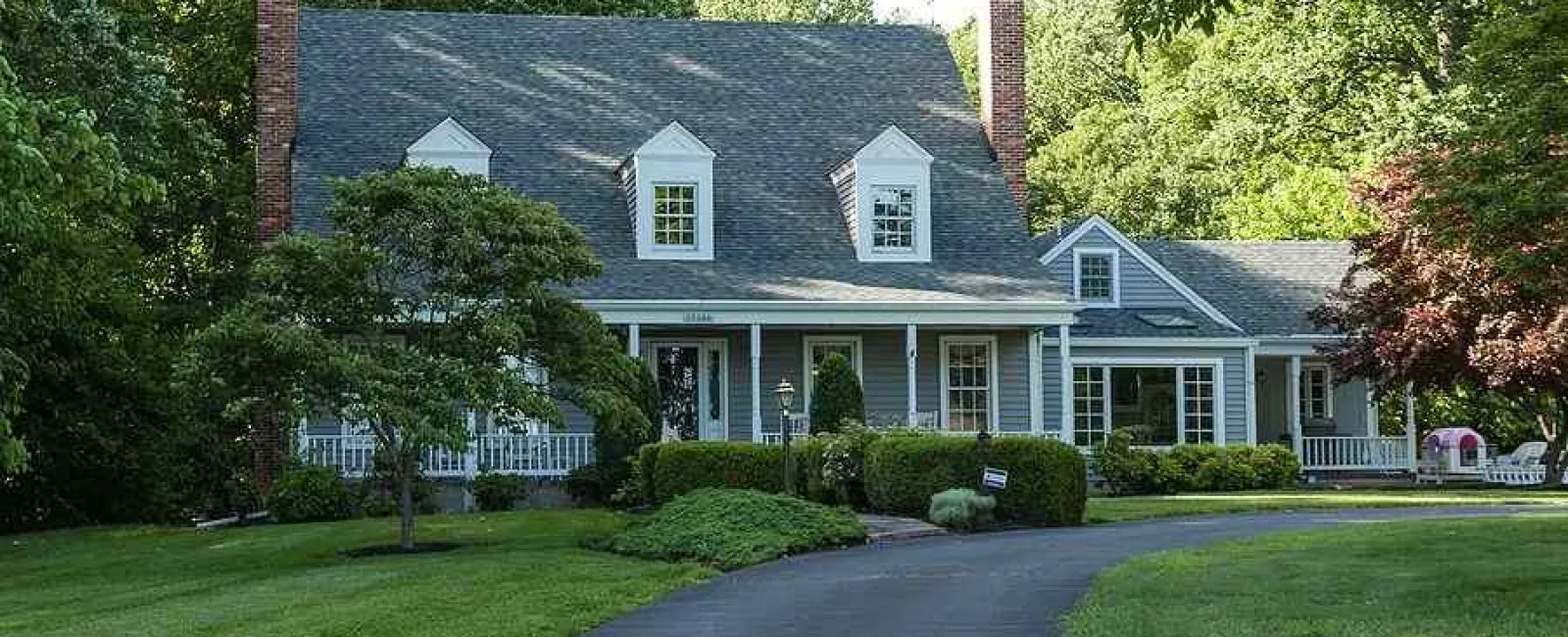Colonial homes are a cornerstone of classic American architecture, celebrated for their timeless symmetry and stately charm. Selecting the right colonial siding is crucial for preserving this historic aesthetic while protecting your investment. The perfect combination of siding style and color can make your home stand out, enhance its curb appeal, and reflect your personal style. This guide will walk you through the best siding ideas for colonial homes, helping you choose the perfect options to elevate your home's exterior.

What Architectural Features to Consider?
Before exploring specific colonial house siding ideas, it's crucial to understand the architectural features that define this style. If your home is historically designated, you may need to adhere to specific regulations. Even for modern colonial-style homes, these core features should guide your choices.
Symmetry: Colonial homes are renowned for their balanced, symmetrical design, with the front door serving as the central focal point. Your siding choice should complement this harmony. Use trim, shutters, and color to enhance the entryway and create a welcoming, balanced look.
Gable Proportions: The sloped, triangular gables are a prominent feature. The right colonial house siding can accentuate these elements. Consider using a different siding style, like shake siding, within the gables to add texture and visual interest that respects the home's historical integrity.
Multiple Stories: Most colonial homes have two or more stories. This presents a unique design opportunity. You can create dramatic dimension by using different siding profiles on each level—for example, traditional lap siding on the first floor with shake siding on the second.
Which Siding Styles Look Great on Colonial Homes?
Choosing a siding style that resonates with the colonial aesthetic is essential for an authentic look. Modern materials offer the classic appearance of wood without the demanding upkeep. Here are some of the best siding ideas for colonial homes:
Traditional Horizontal Siding: Classic lap siding is the quintessential choice for a siding colonial home. Long, smooth, or grained fiber cement planks (like those from James Hardie) mimic the look of traditional wood but offer superior durability and lower maintenance. For a timeless look, opt for classic white or gray shades.
Shake Siding: Often used as an accent, shake siding adds rich texture and character. It's perfect for gables or upper stories to create a sophisticated, traditional appearance. Durable fiber cement shakes provide this elegant look without the risk of rot or costly upkeep associated with wood.
Board and Batten Siding: For a touch of modern farmhouse charm that complements colonial architecture, consider board and batten siding. The vertical lines create a striking contrast, especially when used on gables or additions. A popular combination is horizontal lap siding on the lower story with vertical board and batten on the upper gables.
Mixing Siding Styles: Don't be afraid to combine different types of colonial siding to create a unique and personalized exterior. A thoughtful mix of lap, shake, and board and batten siding can highlight your home's architectural features and create a stunning, custom look.
What Colors Pair Well with Colonial Homes?
While traditional white, barn red, and brown remain popular, the modern palette for colonial siding is much broader. The key is to choose colors that feel both fresh and historically appropriate.
Light-Colored Siding with a Bold Door: A neutral siding in white, gentle gray, or soft beige creates a perfect canvas. Make the front door the star with a bold color like classic red, deep yellow, rich turquoise, or black.
Golden Yellow Siding with White Accents: A warm, golden yellow siding brings a cheerful and welcoming vibe. Paired with crisp white trim and shutters, it creates a sunny exterior. A dark blue or black door provides a perfect finishing touch.
Sage Green Siding with White Accents: A muted, earthy sage green is a unique and sophisticated option that is ideal for historic colonial homes. Clean white accents on the trim and windows allow the gentle green to shine.
Blue-Gray Siding with a Greenish Door: Elegant blue-gray shades were popular on colonial homes in the 1700s and remain a classic choice today. Combine this timeless siding color with a fresh spring green door for a beautiful blend of classic and modern style.
Blue Siding with Black Accents: A soft blue with gray or green undertones gives your home a bright, airy feel. Pair it with bold black accents on the shutters and front door for an elegant, high-contrast design.
Siding Colors for Your Colonial Home
To simplify your decision, think about color families that work well with colonial architecture.
Timeless Neutrals
Crisp whites, soft grays, beiges, and taupes are always in style. They are historically accurate and provide a versatile backdrop that allows architectural details to stand out.
Muted or Dusty Tones
Colors like sage green, dusty blue, and warm yellow offer more personality while maintaining a classic, understated feel. These hues are inspired by nature and connect the home to its landscape.
Bold Statement Colors
For a more commanding presence, consider classic barn red or a deep navy blue. These colors are deeply rooted in American tradition and make a powerful statement.
Accent Colors for Doors and Trim
The trim, shutters, and front door are where you can add a pop of personality. Classic black, deep hunter green, or a vibrant red on the front door can perfectly complement a more neutral siding colonial color.
Tips for Choosing Your Colonial Siding
Keep these practical tips in mind as you finalize your decision.
Consider Local Neighborhoods
Take a drive through your neighborhood to see what siding styles and colors are common. This can provide inspiration and ensure your choices align with the local aesthetic and any HOA guidelines.
Focus on Complementary Elements
Your siding doesn't exist in a vacuum. Make sure your chosen color and style complement other fixed elements of your home, such as your roof color, brick or stone foundations, and window frames.
Think About Energy Efficiency
Modern siding can improve your home's insulation. Consider insulated siding options to help lower your energy bills. Lighter siding colors also tend to reflect more sunlight, which can help keep your home cooler in hot climates like Atlanta's.
Eight Things to Consider When Choosing Siding for Your Home
Selecting the right siding can feel overwhelming. Beyond style and color, here are eight crucial factors to consider to ensure you make a lasting investment.
Climate & Durability: Your siding is your home's first line of defense. Choose a material built to withstand your local weather, from humid summers to freezing temperatures. Products like James Hardie fiber cement colonial siding are specifically engineered for different climates.
Moisture and Rot Resistance: Moisture is the enemy of any home exterior. Look for materials like fiber cement or high-quality vinyl that are impervious to water and will not rot, warp, or grow mold.
Cost vs. Value: While the upfront price is important, consider the long-term value. A low-maintenance, durable siding will save you money on repairs and repainting over the years, providing a better return on your investment.
Pest Resistance: Wood siding can be a target for termites, woodpeckers, and other pests. Materials like fiber cement are non-combustible and pest-resistant, giving you peace of mind.
Fire Resistance: In the event of a fire, non-combustible siding can help protect your home and family. Fiber cement siding will not ignite when exposed to a direct flame, offering superior protection over wood or vinyl.
Maintenance Requirements: Be realistic about how much time you want to spend on upkeep. If you want to avoid frequent scraping and painting, choose a low-maintenance material with factory-baked color, like James Hardie's ColorPlus® Technology.
Aesthetics & Style Options: Ensure the material you choose is available in the styles and colors you want. The best siding ideas for colonial homes often come from materials that offer a wide range of profiles, from smooth lap to textured shakes.
Warranty: A strong warranty protects your investment. Look for comprehensive, long-term warranties that cover both the product and the finish for decades of confidence.
Get Your Free Quote!
Feeling overwhelmed by all the choices? If you want expert support to bring your vision for a refreshed, modern colonial home to life, SuperiorPRO is here to help. As a top-rated home renovation contractor in Atlanta, we provide free, in-home design consultations to help you tackle any project with confidence. We specialize in siding installation and painting services to complete your exterior renovation and elevate your colonial home's aesthetics.

